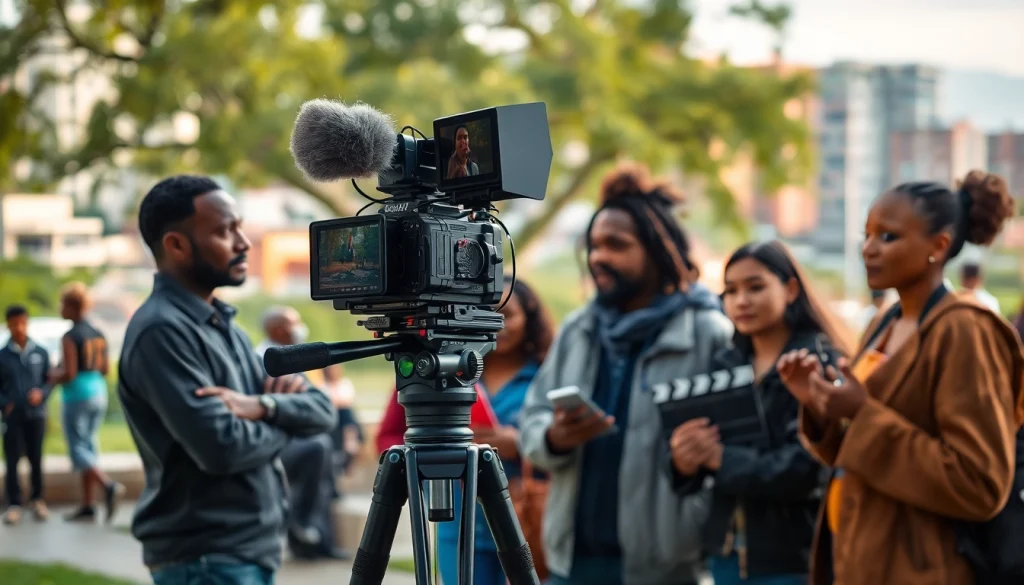
Understanding the Essence of Stories & Documentaries
In an era where content consumption is at an all-time high, the art of storytelling, particularly through Stories & Documentaries, has become increasingly vital. Stories connect us to our shared humanity, while documentaries provide a lens through which we can explore and understand our world. Together, they create a powerful medium for reflection, discussion, and enlightenment. This article delves into the multifaceted world of stories and documentaries, exploring their definitions, significance, and the techniques essential for crafting engaging narratives that resonate with audiences.
Defining Stories & Documentaries: A Closer Look
At their core, stories are narratives that communicate experiences, emotions, and ideas, often structured around a beginning, middle, and end. This narrative could be fictional or based on real events, allowing them to stretch boundaries from simple retellings to complex explorations of human nature.
Documentaries, on the other hand, serve as a factual representation of reality. They aim to inform and educate viewers about various subjects, such as historical events, cultural norms, personal experiences, and social issues. While they may incorporate artistic elements and storytelling techniques, their foundation lies in truth and factual representation.
The Role of Narrative in Documentary Filmmaking
Narrative plays a crucial role in documentary filmmaking. A compelling storyline can transform mere facts into engaging experiences, drawing viewers into the subject matter. This narrative framework helps to structure the documentary, making it not just an informative piece, but also a captivating story. By weaving personal accounts and broader societal themes, filmmakers can foster emotional connections with their audience, enhancing the impact of their message.
Key Elements That Make Compelling Stories & Documentaries
Several elements contribute to the effectiveness of storytelling in documentaries:
- Character Development: Engaging characters enable viewers to invest emotionally in the narrative.
- Conflict: This drives the story forward, highlighting struggles and challenges faced by the subjects.
- Resolution: Offers a conclusion to the conflict, providing insight or understanding to the audience.
- Emotion: Evoking emotional responses is crucial for making the content relatable and memorable.
- Visual Language: The use of visuals, including cinematography, graphics, and editing choices, enhances storytelling.
Types of Stories & Documentaries
Exploring Various Genres of Stories & Documentaries
Stories and documentaries can be categorized into various genres, each offering unique narratives and experiences:
- Biographical Documentaries: Focus on the life of a specific individual, exploring their achievements and challenges.
- Social Issue Documentaries: Highlight significant societal or political issues, encouraging discourse and awareness.
- Cultural Documentaries: Examine cultural practices, beliefs, and experiences, promoting understanding among diverse communities.
- Nature and Wildlife Documentaries: Showcase the beauty and complexity of our planet’s ecosystems, often igniting conservation efforts.
- Experimental Documentaries: Challenge traditional storytelling methods, often blurring the lines between fact and fiction.
The Impact of Personal Stories & Documentaries on Viewers
Personal stories in documentaries provide a unique platform for individuals to share their experiences. These narratives can resonate deeply with audiences, fostering empathy and connection. For instance, documentaries that tell the personal struggles of people facing significant challenges—be it health issues, social injustices, or personal loss—can evoke powerful emotional reactions. By putting a human face on complex issues, these stories prompt viewers to reflect on their values, beliefs, and societal norms.
Cultural Stories & Documentaries: Reflecting Society
Cultural stories encapsulated in documentaries serve to reflect society’s values, traditions, and dynamics. By focusing on specific cultural practices and beliefs, these documentaries help preserve cultural heritage while also educating the wider audience. They often highlight the nuances of identity, allowing viewers to appreciate the diversity of human experience. For instance, documentaries that explore indigenous cultures can reveal their rich traditions, challenges, and contributions to society.
Techniques for Crafting Engaging Stories & Documentaries
Storyboarding and Planning Your Stories & Documentaries
A successful documentary begins with meticulous planning and storyboarding. This process involves outlining your narrative arc, identifying key scenes, and defining characters and settings. By visualizing the flow of your documentary, you can ensure that each segment contributes to the overarching story. Utilize tools like charts and graphic organizers to map out your ideas, making it easier to revise and refine your narrative structure.
Filming Techniques that Enhance Stories & Documentaries
Effective filming techniques are paramount to creating compelling documentaries. Below are some essential techniques to consider:
- Interviews: Capture authentic voices through interviews with key subjects, allowing personal stories to surface.
- B-Roll Footage: Supplement interviews with relevant visuals that enhance storytelling and exemplify key points.
- Innovative Camera Angles: Experiment with various camera angles to add depth and perspective, engaging viewers more effectively.
- Natural Sound: Incorporate ambient sounds that lend authenticity and immerse viewers in the environment.
Editing Tips for Polished Stories & Documentaries
Editing is a crucial phase in documentary production, where the story truly comes together. Here are some tips to achieve a polished final product:
- Consistent Pacing: Maintain a steady flow throughout the documentary to keep the audience engaged.
- Clear Transitions: Use transitions to smoothly connect scenes, ensuring the narrative feels cohesive and fluid.
- Sound Design: Pay close attention to sound editing, including background music and sound effects that enhance mood and focus.
- Color Grading: Ensure visual consistency and enhance emotional tone through thoughtful color correction.
Promoting Your Stories & Documentaries
Marketing Strategies for Stories & Documentaries
Once your documentary is complete, the next challenge is promotion. Implementing effective marketing strategies can significantly increase visibility and audience engagement. Some approaches include:
- Film Festivals: Submitting your documentary to film festivals can provide exposure to industry professionals and audiences alike.
- Online Screenings: Consider hosting virtual screenings to reach broader audiences, paired with Q&A sessions to enhance viewer engagement.
- Collaborations: Partner with organizations or influencers aligned with your documentary’s message to amplify outreach.
Utilizing Social Media to Showcase Stories & Documentaries
Social media platforms are powerful tools for reaching audiences and promoting your documentary. Utilize platforms like Instagram, Facebook, and Twitter to share behind-the-scenes content, trailers, and teasers. Encourage viewer interaction by asking questions or running polls related to the documentary’s content. Engaging with your audience enhances their investment in your work and can lead to word-of-mouth promotion.
Partnering with Platforms for Wider Reach of Stories & Documentaries
Collaborating with streaming platforms, broadcasters, or other distribution channels can drastically increase the reach of your documentary. Research platforms that align with your content and explore partnership opportunities that could facilitate sharing your stories with a wider audience. Consider licensing your documentary for online streaming or airing on television to maximize viewership possibilities.
Measuring Impact: Success Metrics for Stories & Documentaries
Key Performance Indicators for Stories & Documentaries
To determine the effectiveness of your documentary, it’s essential to identify relevant key performance indicators (KPIs). KPIs for documentaries may include:
- Viewership Metrics: Track the number of views across platforms to gauge audience engagement.
- Audience Feedback: Collect viewer responses through surveys, comments, or reviews to assess emotional impact.
- Social Media Engagement: Analyze likes, shares, and comments to understand audience interaction and reach.
Gathering Audience Feedback on Stories & Documentaries
Collecting feedback is vital for improving future projects. Consider using post-screening surveys, online polls, or social media feedback to gather insights about what resonated with viewers and what areas could be improved. Understanding audiences’ perspectives will not only enhance your storytelling but can also clarify messaging in future works.
Continuous Improvement for Future Stories & Documentaries Projects
The journey of storytelling does not end with one project. Utilizing feedback and performance metrics, filmmakers can refine their approach and artistry in future documentaries. Embrace a growth mindset and remain open to learning from both successes and failures to continue evolving as a storyteller.






